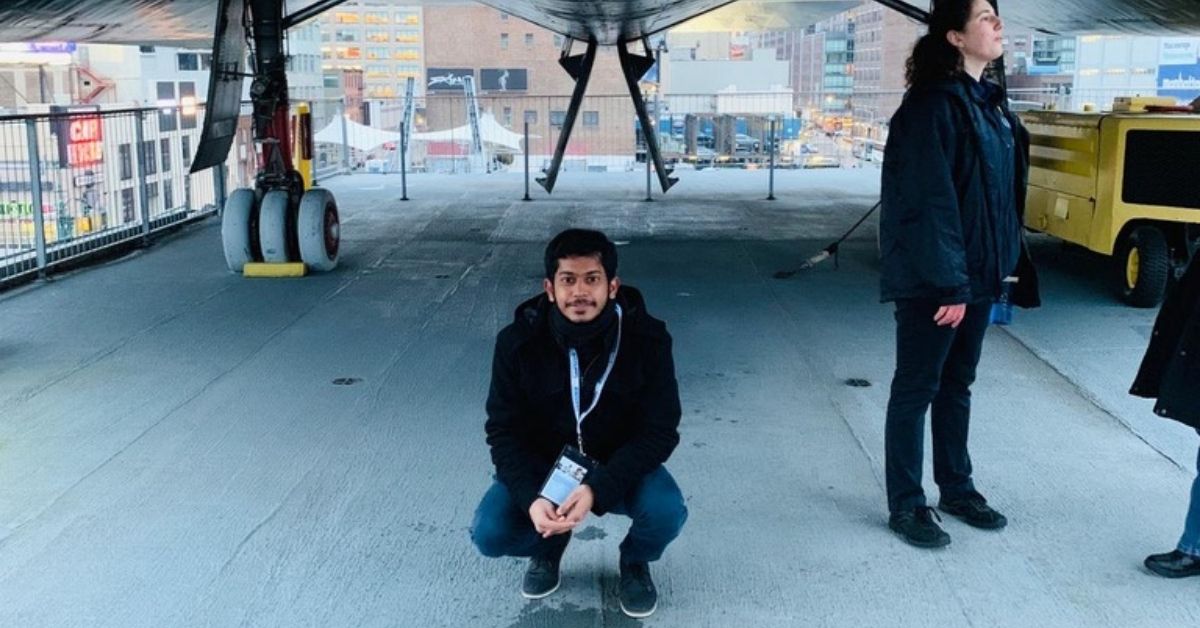Want to Pursue a Career in Aerospace? Here’s How I Got My Dream Job at NASA
Ibrahim Kaleel, a young scientist from NASA, shares what it takes to be a part of one of the most technologically advanced organisations in the world.

Ibrahim Kaleel from Kerala always wanted to work in the field of aerospace and also harboured a love for engineering since his childhood. “But getting a job at NASA was never in my plans. It was rather like a dream that I didn’t know I could achieve,” says Ibrahim, who joined NASA last year as a post-doctoral research fellow.
Hailing from Badiyadka, a small town in Kasaragod, Ibrahim says he was a curious kid. “During my school days, I used to participate in all kinds of activities, be it a social science fair or a debate, I was always in for it. I continued the same momentum during my college days as well. So, I think being curious about things helped me throughout my journey,” Ibrahim tells The Better India.
Ibrahim did his schooling at Little Lily English Medium School and Kendriya Vidyalaya in Kasaragod. He then did his BE in Aeronautical Engineering from the Manipal Institute of Technology in Udupi.
“During my graduation, I got a chance to study at the Ruhr University Bochum in Germany for a semester as part of a programme. I spent around two months there and that’s when I got to know about their master’s programme, which was of interest to me. Then I came back to India, finished my BE and later went back to Germany to pursue my Masters in Computational Science with Mechanics,” says the 30-year-old.

After his post-graduation in 2015, Ibrahim decided to pursue research in his area of interest.
“I got into a European Union-funded PhD programme — Marie Curie Actions. Thus began my research in Computational Mechanics from Politecnico di Torino in Italy in 2016 and graduated in 2019,” he says.
Ibrahim believes that it was the opportunities he received while pursuing his post-graduation and research abroad that helped him build good connections in the international research arena.
“During my research, I attended several conferences in different parts of the world. That’s when I got acquainted with a lot of researchers from similar research backgrounds as mine, including the group I work with currently. It opened up my path to NASA,” says the young scientist.
His current advisor invited him to NASA to integrate some of the codes he developed during his research into their software in 2018. “I spent less than two weeks in NASA as a visiting scientist and that’s how the collaboration started,” he adds.
In 2019, after finishing his PhD, Ibrahim moved back to Germany and joined the Institute of Test and Simulation for Gas Turbines, which is part of the German space agency.
“I worked there for two years and during that time I got a call from the team here in NASA regarding a postdoctoral project that they thought I could be a part of. So, that’s how it started and I joined the NASA Glenn Research Center in October 2021,” he says with a smile.

Explaining his work at NASA, he says, “I work in the branch called multiscale and multiphysics modelling. The branch is in charge of developing tools to design and analyse structures used by engineers to develop new-age space structures.”
Talking about what helped him in his journey towards a dream job, Ibrahim says, “I come from that field where we have very good knowledge about mechanics as well as computational science and to find such people is difficult today. So, I fall into that sweet spot, which worked in my favour. Also, the collaboration that started in 2018 with the NASA team helped me. So, I would say it’s a mixture of everything — luck, networking and good research that helped me get a job at NASA.”
As a piece of advice to the youngsters in India who aspire to work at NASA, he says, “In this day and age, knowledge is easily accessible at your fingertips. You don’t necessarily have to get into the best colleges or institutes. Of course, the brand helps you a little bit to push your career. But in terms of knowledge, even the curriculum of top colleges are easily accessible to anyone. The only thing that matters is how driven you are and how curious your mindset is that pushes you to learn more and more in whatever field you are.”
He continues, “Aerospace is a developing field in India and hence there are fewer opportunities as compared to countries like the US. But one could say that India is slowly growing and we can hopefully see more opportunities in our country as well in the coming years.”
(Edited by Yoshita Rao)
If you found our stories insightful, informative, or even just enjoyable, we invite you to consider making a voluntary payment to support the work we do at The Better India. Your contribution helps us continue producing quality content that educates, inspires, and drives positive change.
Choose one of the payment options below for your contribution-
By paying for the stories you value, you directly contribute to sustaining our efforts focused on making a difference in the world. Together, let’s ensure that impactful stories continue to be told and shared, enriching lives and communities alike.
Thank you for your support. Here are some frequently asked questions you might find helpful to know why you are contributing?


This story made me
-
97
-
121
-
89
-
167











